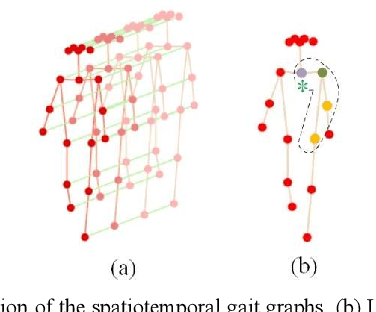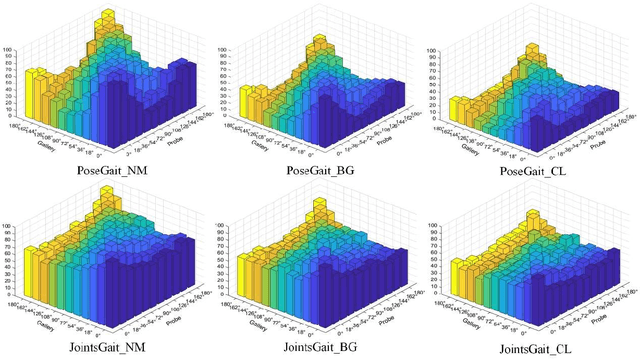A model-based Gait Recognition Method based on Gait Graph Convolutional Networks and Joints Relationship Pyramid Mapping
Paper and Code
Apr 27, 2020



Gait, as a unique biometric feature that can be recognized at a distance, which can be widely applicated in public security. In this paper, we propose a novel model-based gait recognition method, JointsGait, which extracts gait information from human body joints. Early gait recognition methods are mainly based on appearance. The appearance-based features are usually extracted from human body silhouettes, which is not invariant to changes in clothing, and can be subject to drastic variations, due to camera motion or other external factors. In contrast to previous approaches, JointsGait firstly extracted spatio-temporal features using gait graph convolutional networks constructed by 18 2-D joints, which are less interfered by external factors. Then Joints Relationship Pyramid Mapping (JRPM) are proposed to map spatio-temporal gait features into a discriminative feature space with biological advantages according to physical structure and walking habit at various scales. Finally, we research a fusion loss strategy to help the joints features be insensitive to cross-view. Our method is evaluated on large datasets CASIA B. The experimental results show that JointsGait achieves the state-of-art performance, which is less affected by the view variations. Its recognition accuracy is higher than lasted model-based method PoseGait in all walking conditions, even outperforms most of state-of-art appearance-based methods, especially when there is a clothing variation.
 Add to Chrome
Add to Chrome Add to Firefox
Add to Firefox Add to Edge
Add to Edge